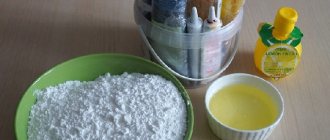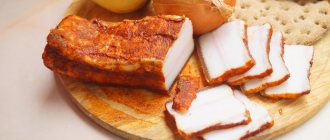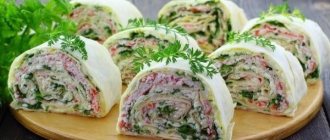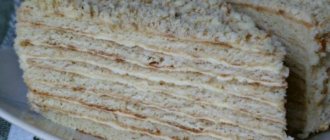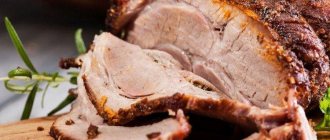Homemade cheese recipes are a great way to stop buying the product at the store and enjoy a healthy option. When creating such a treat, we will use only natural products; in some preparations we will use pepsin and enzymes.
This deliciousness has great benefits for the body. Among the many advantages, several can be highlighted:
- energizes;
- saturates with calcium, which is important for bones and teeth;
- normalizes metabolism;
- helps improve vision;
- has a positive effect on the circulatory system;
- improves sleep.
Below are 10 simple cooking options. Each one only has a couple of ingredients. However, in any case, to obtain a tasty product, you need to choose a high-quality composition.
Homemade cheese made from milk and cottage cheese
One simple option involves using milk and cottage cheese. With the help of such products, you get delicious cheese that is not inferior to store-bought cheese. On the contrary, it is even healthier because it is prepared without additives.
youtu.be/egN5l9P9khY
Grocery list:
- milk – 1.5 l;
- homemade cottage cheese – 1.5 kg;
- egg;
- salt and soda.
Cooking time – 20 minutes.
Step-by-step action plan.
Step 1: Boil the milk. Add cottage cheese without turning off the stove. Bring the ingredients to a boil over high heat again. After boiling, hold for 3 minutes, stirring constantly.
Step 2. Immediately turn off the gas and strain the contents. Use a colander and cheesecloth and strain off the whey.
Step 3. Return the resulting cheese to the saucepan. Add salt to taste, add egg and soda. All this time, the dishes should be on medium heat.
Important information! The egg should be mixed immediately and quickly so that it does not curdle, because you will be introducing it into a hot product.
Step 4: Stir constantly. Don't pay attention to the lumps; they will melt later. The process takes from 3 to 5 minutes.
Transfer the finished mixture to a deep bowl. Seal and cover with cling film. Wait until it cools down. Then you can immediately cut and serve.
Cheese at the right temperature
Another thing is hard or semi-hard cheeses of the Swiss and Dutch type, which Peter I brought to Russia together with cheese makers. During their production, the cheese curd is heated (“boiled”). To avoid confusion, the French and Italians, instead of the concepts of “semi-solid” and “hard”, introduced two corresponding categories into their classification: “uncooked pressed” and “boiled pressed”, respectively.
For the production of uncooked pressed cheeses, which include French Beaufort and Reblochon, Dutch Gouda, Spanish Manchego and our Soviet cheese, finely chopped cheese mass (for medium-hard cheeses - the size of a grain of corn, for hard cheeses - the size of a grain of rice) placed in molds and immediately pressed.
To obtain hard, long-lived boiled pressed cheeses - Italian Parmigiano-Reggiano and Grana Padano, Swiss Gruyère, French Comté and Abondance (by the way, there are few boiled pressed cheeses in France) - the cheese curd after cutting is heated for 40 minutes or more at a temperature of about 55 ° C and Only then are they pressed into molds.
All rather rare whey cheeses, which are produced from whey left over from the production of more “serious” hard cheese counterparts, could also be classified as boiled cheeses. The proteins contained in it (albumin and globulin) do not precipitate during the oxidation process and do not curdle under the action of rennet - they precipitate only when heated and are therefore very sensitive to temperature. So even a small amount of whey solids can be used to make cheese.
The best example of this is fresh Roman ricotta (ricotta - literally "re-brewed") - which lives up to its name. In order to turn the sheep's milk whey remaining after the production of pecorino into a solid mass, it is heated to 70–75 ° C and fermented with citric acid, at the very end raising the temperature to 85–90 ° C.
As a result, albumin, contained in large quantities in the serum, and globulin (in small quantities) coagulate and float to the surface in the form of flakes. The curdled mass is removed, placed in shallow conical wicker baskets, and left to drain for 12–14 hours, and sometimes for a couple of days. After all these simple procedures, ricotta is born - fresh, slightly salty, low-fat crumbly white cheese, reminiscent of cottage cheese in consistency, only a little denser.
Norway is also famous for similar whey cheeses, where they produce the unique Etost cheese, or Geitost. The French whey cheese Corsican broccio is also famous.
But that's not all! A separate category includes fresh, dry or smoked cheeses with a fibrous structure, or “stretched” cheeses, which are especially common in southern Italy, where they are classified as pasta filata (literally “stretched dough”); typical representatives are mozzarella and provolone.
A simple recipe for homemade cheese made from milk and sour cream
When making homemade cheese, cottage cheese will compete with sour cream. The result is an equally tasty and tender treat. In addition, the process will take very little time.
youtu.be/AjIAq-w4Gj8
Grocery list:
- liter of milk;
- sour cream – 300 g;
- eggs – 3 pcs.;
- salt and turmeric.
Duration – 1 hour.
Action plan.
Step 1: Boil the milk. Add salt to taste. If you want an unsalted version, then a teaspoon will be enough, but for a lightly salted version you will need a tablespoon.
Step 2. Separately, beat the eggs with sour cream until smooth.
Step 3. Add the sour cream mass into boiling milk in small portions. Stir constantly while doing this.
Step 4. Cooking time is 7 – 10 minutes. During this time, you must not leave the pan. Always stir to prevent anything from burning. Before turning off the heat, add a pinch of turmeric for color.
Transfer the contents from the pan to a colander to strain out the whey. Place the separated “pulp” into a hoop, cover with a plate and place under a press (a jar of water or the like) for 60 minutes.
Video recipe for sour cream cheese:
Ingredients and equipment
Ingredients for making cheese
Any cheese is based on high-quality milk, a coagulant, cheese starter and salt. Later, as you begin to get better at cheesemaking, you may need pure mold culture, calcium chloride, and other additives needed to level up your cheesemaker level. Let's figure out what each of these ingredients is needed for and what to look for when choosing it.
Milk
Milk is the cornerstone of cheese making. The taste and consistency of the cheese, as well as all stages of its production, depend on its quality. Cow's, goat's and sheep's milk are mainly used to make cheese. The best for cheese making is pasteurized milk, while a long-term pasteurization mode is preferable, when the raw product is heated to 62-65 ° C and maintained at this temperature for 30 minutes. Unfortunately, most manufacturers violate pasteurization regimes, as a result of which milk becomes unsuitable for making cheese (its ability to coagulate worsens). For the same reason, UHT milk should not be used.
In the absence of a reliable supplier of pasteurized milk, the best solution is to use the services of local farmers. However, you must be 110% confident in its quality. Raw milk must come from disease-tested animals and be stored under ideal conditions. If you are not entirely sure of the quality of farm milk, it can be pre-pasteurized. Raw, unpasteurized milk must mature for at least 2-3 hours after milking before being processed into cheese, but must be used within 36-48 hours maximum. During cheese making, 10-20% less starter and coagulant are added to such milk.
Coagulant
A coagulant is a cheese enzyme that helps coagulate milk proteins and fats into a jelly-like cheese curd that can be turned into curd grains and pressed. Usually the coagulant is called rennet, but this is not entirely true, since rennet is only one of the types of coagulants. There are four of them: chymosin (animal rennet), pepsin (animal enzyme), vegetarian chymosin (an artificially grown enzyme from mold forms) and microbial rennin (pepsin from algae and fungi). Cheese recipes usually specify which coagulant to use.
Leaven
Cheese starter (starter culture) is pure strains of lactic acid bacteria. They convert milk sugar into lactic acid, increasing the acidity of the cheese, which prevents the development of pathogenic bacteria in it. Homemade cheese starters can contain one strain of lactic acid bacteria (monospecies) or several such strains (polyspecies). The bacteria themselves can be homofermentative or heterofermentative. The former produce predominantly lactic acid and practically do not change the texture of the cheese, while the latter, in the process of lactic acid fermentation, release lactic and acetic acid, ethanol and carbon dioxide, which leads to the formation of so-called eyes in the cheese dough (the same holes in purebred cheeses).
Also, all starter cultures are divided into mesophilic, which are suitable for making cheeses with a low second heating temperature (most soft, fresh and hard cheeses), and thermophilic, intended for cheeses with a high second heating temperature (Gruyere, Emmental, Provalone, etc.) . For each type of cheese, a different type of starter culture is selected, consisting of one or more strains. Yogurt starters are not used in cheese making.
Pure mold culture
To make cheeses with mold (Camembert, Brie, Roquefort, Gorgonzola, etc.) you will need a pure culture of this same mold. There are three main types of mold: white (Penicillium Candidum and Geotrichum Candidum), blue or green (Penicillium Roqueforti) and red (Brevibacterium Linens). Pure mold culture comes in powder form, which must be stored in the freezer.
Calcium chloride
Calcium chloride (calcium chloride, CaCl2, food additive E509) is an optional but important ingredient for making cheeses. It improves the formation of a cheese curd, increases the yield of the product and normalizes the calcium content in it, which is very important if the milk has been pasteurized. When cooking cheese, an 8-10% calcium chloride solution is usually added at the rate of ¼ tsp. for 4-4.5 liters of milk before adding starter and enzymes.
Salt and additives
Salt is a necessary ingredient in the preparation of most cheeses, with the exception of soft cheeses such as mozzarella and ricotta. It is needed to normalize taste and regulate microbiological and biochemical processes that occur during cheese ripening. In home cheese making, it is recommended to use non-iodized sea salt with medium-sized crystals. Also, to prepare some types of cheese, you may need other ingredients. For example, natural coloring (annatto, carmine, various herbs), lipase (enhances the spicy aroma of some hard Italian cheeses), various spices, citric acid or vinegar.
Equipment for cheese making
To make almost any cheese you will need:
- Large saucepan for cooking cheese. On average, the yield of cheese is 10-20% of the volume of milk, so to prepare 1 kg of cheese you need a saucepan of at least 5, and preferably 10 liters. In the cheese making process, slow heating of the milk is important, so the best solution would be a saucepan with a steam-water jacket or a water bath constructed on your own.
- Cheese knife or lyre for cutting cheese curd. A cheese knife differs from a regular knife in length and has a rounded tip. A cheese lyre is a frame with a handle, inside of which a string is stretched in the form of a grid. You can use a regular knife, but it must be long enough, thin and very sharp so as not to tear the cheese curd.
- Molds for homemade cheese are containers for molding and pressing cheese grains. Usually made from food grade plastic. They can have different designs (with or without a lid, with or without a piston for pressing, with small or large perforations) and sizes. The form is selected individually for each individual type of cheese.
- Press for hard cheese. In its simplest form, it consists of four posts with a moving upper platform on which a load is placed. You can use available materials as cargo: bricks, water containers, heavy books, etc. There are also more modern screw, lever and hydraulic presses designed to make pressing cheese easier.
- Cheese cloth (gauze or muslin). During molding and pressing, it holds the cheese grain. Cheese fabric has a denser and more reliable weave than pharmaceutical gauze, and is preferable for cheese making.
- Drainage surface - needed at the stage of molding, pressing, drying and aging cheese. It helps drain the whey and aerate the bottom of your cheese. Can be replaced with any sterile grid.
- Covering for cheese ripening. Semi-hard and hard cheeses require a coating that will protect them from mold and drying out during aging. Wax/paraffin, wax-impregnated paper, latex, foil, shrink bags, etc. are used as cheese coatings.
- Accessories: thermometer with probe for accurate measurements of milk temperature, jewelry scales for starters and enzymes, various measuring containers (measuring cup and spoons), perforated ladle or slotted spoon for stirring the curd, colander, waxing equipment, sealed containers for ripening cheese, needle for piercing cheese and other little things that will help make cheese making more convenient and fun.
Delicious homemade kefir cheese
Another elementary version of the product, only brewed on a kefir base. The presented recipe is simpler than the previous ones; there is no fuss with cottage cheese or sour cream. A little free time is enough.
youtu.be/-V6_Qd9VNoE
Grocery list:
- kefir – 2 l;
- egg;
- a tablespoon of butter;
- salt and soda.
Cooking time – 1 hour.
Step-by-step action plan.
Step 1: Build a steam bath. To do this, boil water in a large saucepan. Pour kefir into a smaller saucepan and place on a large saucepan.
Important information! Do not allow the small saucepan to touch the water in the large one, otherwise the dairy product will heat unevenly.
Step 2. There is no need to stir the contents. Wait for the kefir to curdle. Then strain the whey from the “pulp” using a colander with gauze.
Step 3. When the excess moisture has drained, cover with gauze and place the press directly in the saucepan to squeeze out the remaining whey and compact the future treat.
Step 4. After half an hour, transfer the resulting mass to a saucepan. Mash a little and add the rest of the ingredients. Stir until smooth.
Step 5. Return to the water bath and melt for 12 minutes, constantly kneading with a spatula.
Grease the cheese mold with butter. Transfer the melted mixture into a container. Once cooled, place in the refrigerator. The cooled solid product can be consumed.
The most delicious homemade goat cheese recipe
We think you shouldn’t forget about cottage cheese made from goat’s milk. It is most beneficial for the body and will not cause allergies. But because of its smell, which is specific for many, it is rarely used in cooking. But goat cheese has no pungent odors, but retains beneficial vitamins. And if you replace milk with water, then there will be practically no smell left. As a result, from a kilo of cottage cheese you can get about 600-650 grams of cheese.
Required:
- 1 kg goat cottage cheese;
- 1 liter goat milk;
- 100 g butter;
- 15 g salt;
- 10 g soda.
If you prefer hard cheese, then add 1 chicken egg to all ingredients.
Step-by-step preparation:
1. Pour milk into the cottage cheese and melt until whey appears. Strain through cheesecloth or a fine sieve.
2. Mix all ingredients and heat in a water bath until smooth. This will take about 10-20 minutes. Don't forget to mix.
3. Pour into molds and let cool first at room temperature, then in the refrigerator.
To get holes in the product and a more delicate texture, you need to take 2 times more milk than cottage cheese. After this, the cheese mass will become watery, and you will need to keep it in a colander under pressure for 4-5 hours in the refrigerator.
In principle, making goat cheese is not difficult. It tastes no worse than store-bought, especially if all the ingredients are natural.
Recipe for Brunost cheese at home
Brunost is a brown Norwegian product. At first glance, it may seem quite difficult to prepare. However, it really only takes two ingredients and a little time.
youtu.be/F-PegeF0a-4
Grocery list:
- whey – 1.5 l;
- cream – 350 g.
Cooking time – 30 minutes.
Action plan.
Step 1. Place the pan with whey on the fire. After 75 minutes, the contents will boil down and acquire a caramel color.
Step 2. Pour in the cream. Don't get distracted, it's important to constantly stir the mass to get the desired structure.
Important information! The mixture will boil down during cooking. Dark lumps will also appear. Don't be alarmed, this is how it should be. Just break it up with a spatula and stir.
Step 3. This cooking takes about half an hour. Control readiness by the thickness of the mass. You will also see that the mixture has taken on the color of boiled condensed milk.
Distribute the resulting product into molds. Here I used small silicone ones for cupcakes. Place in the refrigerator until the morning. Once set, you can cut into wedges and serve with hot toast.
Cheese "Pigtail": a simple recipe
“Kosichka” is one of the popular cheeses that goes perfectly with beer. By the way, the recipe for homemade beer can be found at the link, but that’s not about that now. The presented product can be prepared at home with just a couple of ingredients.
youtu.be/dySIJSejxRI
Grocery list:
- milk – 3 l;
- vinegar 9% – 75;
- salt – 200 g;
- liter of water.
Cooking time – 60 minutes.
Step-by-step action plan.
Step 1. Heat the milk to 40°C. Stir constantly to ensure even heating.
Important information! Also, to find out the exact indicators, I advise you to purchase a kitchen thermometer. This is a necessary element for every housewife. In addition, the milk must be rustic; pasteurized milk will not work.
Step 2. To separate the whey, add vinegar to forty-degree milk. At the same time, pour slowly, reduce the gas to a minimum and stir constantly.
Note! If the cheese does not separate, then add more vinegar, but the total mass should not exceed 150 ml. At the same time, pour in gradually in small portions after 3 to 5 minutes. For ease of calculation, I note that 25 ml of liquid is required per liter of milk.
Step 3. When the color of the whey approaches transparent, remove the resulting product using a slotted spoon and transfer it separately.
Step 4. Continue heating the whey to 70 – 80°C. This is the melting point of the Pigtail. When it reaches it, pour into a wide saucepan.
You need to wear gloves when melting cheese to avoid getting burned.
Step 5. Dilute 200 g of salt per liter of water to obtain a special solution. Work the mixture as if it were dough. It is important that it becomes smooth and elastic.
Step 6. Make a hole in the center, shape into a donut and stretch. The process takes 20 minutes. Stretch to the desired length, then fold in half and continue the process. The diameter of the thread should be 5 - 8 mm.
Place the threads in the brine for 15 minutes. Then twist the braid. Secure the finished treat with thread and trim off the uneven edges. Afterwards you can put it in the refrigerator or eat it right away.
Boiled cheese
It turns out to be a very tasty cream cheese with a hint of spice.
To make cheese, for 1 kg of cottage cheese we need:
- 75 g butter;
- 200 g cream or homemade sour cream;
- 1 egg;
- salt, cumin to taste.
Leave the cottage cheese in a closed pan in a warm place. After 3-4 days it will become covered with mold, giving it a characteristic taste.
Grind the blue cheese with a meat grinder, mix with cream, salt and caraway seeds. Melt the butter in a saucepan, add the curd mass. Cook, stirring, until a homogeneous melted mass is obtained.
Add the beaten egg at the end of cooking, stir well and heat without bringing to a boil.
Place in a mold greased with butter, press down with a press and put in the refrigerator. Like homemade cheese, boiled cheese will be ready in a few hours.
The hardness of the cheese depends on the time spent under pressure. Excess liquid must be drained as it forms.
How to make Chechel cheese at home
Preparing homemade “Chechel” is in many ways similar to the process of creating “Pigtail”. This also requires few ingredients, but care is required.
youtu.be/X8yFLkfbIMg
Grocery list:
- milk – 3 l;
- vinegar 9% – 75 ml;
- salt.
Preparation time: 2 days.
Step-by-step action plan.
Step 1. Heat cooled cow's milk to 40°C. You will need a thermometer here. Pasteurized milk is not suitable for this product.
Step 2. When you reach the desired temperature, begin adding vinegar in a small stream. Stir constantly to distribute the liquid evenly.
Step 3. Reduce gas to minimum. Continue stirring. The mass will begin to stick to the spoon.
Step 4. When the contents have curled, remove the saucepan from the heat, and begin to collect the resulting cheese with a spoon into a large lump.
Step 5. Transfer the resulting lump into a separate container. Pour a small amount of whey there.
Step 6. Start kneading the product as you knead dough. Then make a hole in the center, form a donut and start stretching it.
Step 7. Gather the stretched layers into a ball again, place on a saucer and salt on both sides.
Step 8. Cover with a plate and wait until it cools completely. Then put it in the refrigerator for 2 days.
youtu.be/XQwSDXAsQL4
You can tie the finished product into a braid or cut it into strips. This cheese is much tastier and healthier than the store-bought version. It perfectly complements any holiday table.
How to make processed cheese from cottage cheese
My family loves Altai processed cheese very much. Judge for yourself, when you spread a delicate creamy texture on a piece of fragrant bread, and even sprinkle finely chopped herbs on top, or even aromatic herbs are already in the product itself, you can’t imagine a better breakfast. And tasty, and healthy, and appetizing!
But somehow it turned out that this miracle was not available at the dacha, but the family really wanted it. Fortunately, they come to us every evening and sell fresh dairy products, including village cottage cheese, so the problem was quickly solved and the next morning everyone enjoyed a delicious breakfast.
We will need:
- Fresh cottage cheese – 0.5 kg.
- Butter – 100 gr.
- Egg – 1 pc.
- Soda – 1 tsp.
- Salt, herbs - to taste and desire.
Preparation:
1. The best results are obtained when the product is cooked in a steam bath. Therefore, fill a small saucepan or any saucepan that is convenient for you about half with water and send it to the stove to heat to boiling temperature.
2. At this time we prepare our ingredients. To begin, place fresh cottage cheese in a large metal bowl that will be convenient to place on top of the pan.
3. Add slightly melted butter, cut into pieces, break an egg, add salt and add a spoonful of soda. It is this that allows the dairy product to “bloom” when heated to the state we need.
4. To speed up the process of mixing the ingredients and then melting them evenly, you can use a blender, which will quickly turn the mixture into a homogeneous mass without lumps.
5. Now you can proceed to the most important and crucial moment in the entire cooking process. We place the bowl on the saucepan so that its bottom does not touch the water, but rather is located above thick steam, which will be the most important heating element in the process of melting the resulting mass.
6. Cook with constant stirring until the entire mixture reaches a viscous consistency. If you like processed cheese with additives, then this is the best time to add chopped herbs, pieces of ham, mushrooms or other fillers.
7. Pour the finished liquid product into a metal or ceramic sealable mold. You can choose any container from which it will be convenient to take the creamy mass later.
8. Let it cool on the counter to room temperature, and then close the lid and put it in the refrigerator for a couple of hours.
9. The finished delicacy is very convenient and easy to spread on pieces of bread.
For breakfast, such a product is always highly desirable, and it is eaten with great pleasure!
Homemade cream cheese
Homemade creamer is a smooth and delicious treat that can be served for breakfast or used to create amazing appetizers, cheesecake or dessert cream. You don't need a lot of ingredients or time to prepare.
youtu.be/9uBT0rnW-Ko
Grocery list:
- sour cream 25% - 400 g;
- Ryazhenka 4% – 400 g.
Time until ready – 8 hours.
Action plan.
Step 1. Combine fermented baked milk with sour cream in one bowl. Stir until smooth.
Step 2. Build the following - take a large saucepan. Place a small plate or hoop at the bottom. Cover the colander with a thick cloth and place it on this structure. As a result, the whey will gradually drain and will not touch the future cheese.
Step 3. Pour the resulting mixture into the prepared colander. Cover well with a cloth.
Step 4. Place a saucer with a press on top. Place in the refrigerator for several hours. Preferably overnight.
In the morning, the creamy deliciousness is ready. From the proposed amount of ingredients we got 550 g of cheese. Transfer to a convenient container and serve for breakfast. Together with hot toast or bread, it turns out very well.
Useful tips and tricks
The taste of cheese directly depends on the sterility of the equipment involved in cooking. Every time you touch a workpiece, you must wipe your hands with an alcohol solution. Foreign bacteria can cause the product to sour.
A regular colander will help give the head a rounded shape. After wrapping with parchment, you should carefully form the workpiece with a kitchen utensil and leave it in this form in the refrigerator.
The ripening period directly affects the taste of the product. The longer the cheese sits in a suitable environment, the richer it becomes. However, it should be taken into account that excessive exposure will lead to a softening of the structure and the product will spread.
Varieties that require salting must be soaked before use. For this procedure, ordinary clean water is suitable.
Simple sourdough cheese
Mozzarella is one of the favorite types of cheese for pizza, casseroles or pasta. Next, I will show you how to prepare such a product at home. In this case, I will only use sourdough.
youtu.be/5lPUCQRScjg
Grocery list:
- dry calcium chloride 77%;
- ferment starter;
- 4 liters of milk;
- 820 ml water;
- 180 g salt;
- starter for cheeses.
Cooking time – 5 hours.
Step-by-step action plan.
Step 1. You must use milk at a temperature of 35°C. Pour in calcium chloride diluted in water.
Step 2. Sprinkle sourdough starter on top according to instructions. For a volume of 4 liters you will need ½ part of a measuring spoon. Leave for a couple of minutes.
Step 3: Stir the milk well to distribute the starter evenly. Cover with a lid and leave for half an hour.
Step 4. Pour in the enzyme diluted in water and stir. Cover again and leave for 40 minutes until a curd forms.
Step 5. Cut the resulting curd into cubes 2 cm thick. Leave for a couple of minutes to release more whey.
Step 6. Place on low heat. Start cooking and stir constantly until it reaches 40°C.
Step 7. Turn off the gas and leave the contents for a couple of minutes for the grain to settle. Transfer the resulting mass into a colander.
Step 8: Now place the thick mixture in a steam bath. Cover with a lid for 3.5 - 4 hours. At the same time, turn the contents every 30 minutes.
Important information! Before proceeding further, cut off a small piece of the mass and test for melting by immersing it in hot whey. If it stretches well, then you can proceed to the next steps.
Step 9. Cut the masses into small pieces. Immerse in hot whey for a couple of minutes. Then mash the pieces into one lump.
Step 10. Place the resulting lump in cold water for a couple of hours. At this time, prepare the brine.
Make balls from the lump. Place the resulting balls in salting for half an hour. That's all, the cheese is ready. You can cut and serve, or use as an ingredient for any dish.
Curd cheese made from sour cream
As with kefir, it is more convenient to freeze sour cream first. Fat content should be from 20%.
You will need:
600 ml 20% sour cream.
Preparation:
Line a colander or sieve with several layers of gauze and place frozen sour cream there. Place the entire structure in a bowl or pan to allow the whey to drain. Cover the sour cream with the ends of the gauze and leave for 8-12 hours at room temperature. Then twist the edges of the gauze into a rope, press everything down with a press and leave it in the refrigerator overnight.
Cake “Milk Girl”: 5 homemade recipes
Homemade milk cheese with pepsin
Pepsin is an enzyme that is often used to create homemade cheese. There are no difficulties with purchasing it. However, for this treat you need to use natural village milk, and not the pasteurized store-bought version.
youtu.be/3oiL2NJlkIk
Grocery list:
- milk – 4.5 l;
- pepsin;
- salt – 1.5 tbsp. l.
Cooking time: 8 hours.
Step-by-step action plan.
Step 1. Place the milk on the stove. Bring to 40°C. If you don't have a thermometer, then put your finger down. He should be comfortable, not hot. Then immediately remove from heat.
Step 2. Place a portion of pepsin (instructions for use are indicated on the package) in milk. Many housewives dilute it in water, but here I decided to dissolve it with milk.
Step 3. After 2 minutes of stirring, cover with a lid and towel. Leave to infuse for 30 minutes.
Step 4. A clot is formed. It needs to be cut into small squares. Stir to release the whey. Then heat over medium heat until one large lump forms.
Place the resulting mass in a colander for 60 minutes. Don't forget to add salt on each side. Transfer the product to a plate, cover and refrigerate overnight. Then you can cut and serve.
The benefits of homemade cheese
This dish is not only tasty, but also healthy. What are the beneficial effects of homemade milk cheese?
There are several clear advantages:
- an additional source of calcium, which is especially important for the skeletal system and teeth;
- normalization of metabolism;
- energy charging;
- improved vision;
- improved sleep and relief from insomnia;
- optimization of the circulatory system.
Thus, homemade milk cheese is undoubtedly a healthy product. True, provided that it is made from natural products and in accordance with the recipe. We will talk about several options for the cheese delicacy below.
